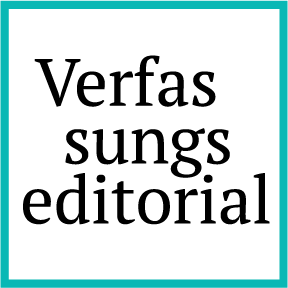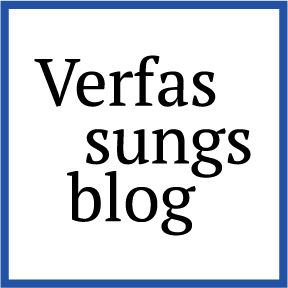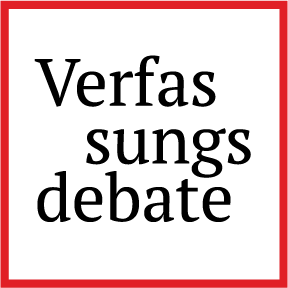Fast Fashion, Slow Transition
Social and Environmental Rights at the Heart of a Sustainable Transition in the Textile Industry
In the new ultra-fast fashion era, garment production cycles are accelerated to new heights, while the quality of the garments deteriorates. Key characteristics of the industry are its reliance on cheap manufacturing, overconsumption and short-lived garment use. The textile industry accounts for 10% of global carbon emissions and 20% of global wastewater, making it one of the most polluting industries in the world. At the same time, phenomena linked to climate change, such as flooding and extreme heat, threaten the workers in apparel production centres situated in some of the most climate-vulnerable countries. To bring an end to these high environmental and social costs, a shift towards a sustainable textile industry is long overdue.
In 2009 the Office of the UN High Commissioner for Human Rights recognised that the enjoyment of a broad array of human rights is threatened by climate change. Fast forward to 2025, the effects of climate change can be widely seen in the textiles industry as increased heat stress and flooding affect worker health, production pace and infrastructure. These events show that human rights, the environment and climate change are strongly interlinked, which clearly touches upon the human right to a clean, healthy and sustainable environment (HR2HE). This right constitutes a precondition to the enjoyment of human rights, as these cannot be enjoyed without a healthy and sound climate. Gradually, the HR2HE has been emerging under international law with the adoption of UN Resolution 48/73 as an important recognition (see Otto Spijkers’ previous post on the status of this human right under customary international law here). The importance of the HR2HE was confirmed in the case law of the European Court of Human Rights (see: KlimaSeniorinnen; for further discussion about the environmental human rights framework under the European Convention on Human Rights, see Natalia Kobylarz’s post here) as well as in case law at the national level (see: Urgenda).
The transition towards a sustainable textile industry requires fundamental changes that can be initiated by a strong legal framework. An example of such a catalyst of change can be found at the level of the European Union, where the EU Strategy for Sustainable and Circular Textiles (EU Strategy) envisions to bring “fast fashion out of fashion”. One of the instruments crucial to this transition is the Corporate Sustainability Due Diligence Directive (CSDDD).
This blog post will set out who is responsible for the protection of human rights from climate change within the textile industry. In a second step, this blog post aims to analyse the EU Strategy, focusing on the intersection between environmental and social rights in the textile industry. Lastly, this post aims to set out how the EU envisions their obligation with regard to climate change, both in relation to mitigation and adaptation in the textile industry. The focal point of the analysis will be the concept of circular economy. Ultimately, the goal is to show the importance of centralising the intersection between social and environmental rights within the legal framework to make sure both society and the environment can benefit from the green transition.
This discussion is important, particularly in relation to the current blog post symposium’s exploration of the intersection of the HR2HE and intellectual property (IP) protection. IP protection in the textile industry plays a significant role in shaping the sustainability transition. For instance, trademark and copyright protection on garments and other products can hinder their sustainable upcycling and raise concerns about balancing IP rights with circular economy principles and the HR2HE. This issue, along with potential legal solutions, will be further explored in upcoming posts by, among others, Martin Senftleben, Irene Calboli, Péter Mezei and Heidi Härkönen.
Protecting human rights within the textile industry
As recognised by the preamble of the 2015 Paris Agreement, states should, when taking action to address climate change, respect, promote and consider their respective obligations on human rights. The linkages between human rights and climate change are widely recognised at the national and international level. Within the textile industry, states involved in production and consumption have to take responsibility for protecting their communities from climate change. At the same time, as recognised by the UN Guiding Principles on Business and Human Rights, private actors, including brands, retailers and suppliers, also need to take responsibility to protect workers and the environment.
Through voluntary policies of corporate social responsibility, companies aim to develop sustainable policies and make decisions that take the environment and society into account. These policies have often proven to be ineffective in improving labour standards or providing a living wage within the textile industry’s global supply chain. Acknowledging the ineffectiveness of voluntary actions, the conduct of private corporations is increasingly governed at international and national levels by national environmental laws and policies that aim to protect environmental rights, even extraterritorially (see: Loi de Vigilance, Lieferkettengesetz and CSDDD). A more systemic approach can be found in the development of a circular economy which aims to transform the linear business model by circulating products and materials at their highest value. This concept aims to tackle climate change and other environmental global challenges like pollution through processes like maintenance, reuse, refurbishment, recycling and upcycling.
The EU strategy for sustainable and circular textiles
Introduced in 2022, the EU Strategy recognises that the linear business model is at the roots of many of the negative social and environmental impacts in the textile industry. Building on the aims set forward by the EU Green Deal, the Circular Economy Action Plan and the EU Industrial Strategy, the EU envisions a transition to sustainable and circular production, consumption and business models. The Strategy sets forward the Commission’s vision for the future of the textile industry. This includes that “all textile products placed on the EU market are durable, repairable and recyclable, to a great extent made of recycled fibres, free of hazardous substances, produced in respect of social rights and the environment”. To meet this goal, the EU Strategy builds a framework based on revising existing legislation as well as new legislation that touches on the textile industry. Through 16 pieces of legislation, the EU Strategy aims to change the entire lifecycle of textile products and the way they are produced and consumed. Central pieces of legislation are the CSDDD, the Green Claims Directive, the Waste Framework Directive, and the Ecodesign for Sustainable Products Regulation.
The circular economy and social rights in the textile industry
Many of the pieces of legislation touch upon the environmental aspect of sustainability by focussing on the transition towards a circular economy. The idea is that the circular economy will reduce the dependency of clothing producers on fossil fuels and, at the same time, reduce their impacts on climate change and microplastic pollution. A key legislative instrument is the Ecodesign for Sustainable Products Regulation, which introduces the Digital Product Passport and a prohibition on destroying unsold textile products.
The circular economy has much potential to bring an end to pressing environmental issues such as the overuse of national resources and waste-related problems. So far, the greatest action among brands, manufacturers, and producers can be situated in reducing the environmental footprint of the industry by adopting new technologies. However, the environmental footprint of the industry is still expected to grow as resource consumption continues to increase in the coming years. When reviewing the legislative instruments crucial to the green transition envisioned by the EU Strategy, it becomes clear that the focus of the EU legislator is mainly on the protection of the environment and less on the impact on social rights. The most promising instruments that take the intersection between environmental and social rights into account are the Corporate Sustainability Reporting Directive and the CSDDD. The CSDDD aims to foster sustainable and responsible behaviour for a just transition towards a sustainable economy. The impact of EU corporate accountability legislation remains to be seen, as the Omnibus simplification package significantly weakens the sustainability obligations.
Thus, social and human rights implications are not automatically addressed with circular solutions, as the concept of circular economy does not always mean sustainability. Even within recycling facilities, there have already been reports about child and forced labour. The impact of circular business models on labour in the value chain is not sufficiently addressed by the legal framework. Job growth will significantly be disrupted by the move towards a circular business model. At the same time, there remains a strong risk of perpetuating existing working conditions concerns, such as low wages, excessive overtime, and harassment. Informal workers will be of crucial importance in areas such as waste-picking but are especially vulnerable to negative social impacts as they are also more likely excluded from legal protection.
Lastly, the EU strategy acknowledges that the exploitative business model based on overconsumption and overproduction lies at the root of negative socio-ecological impacts in the Strategy. However, the unsustainable business model and purchasing practices are not addressed by the legislation envisioned by the EU Strategy. Only when textile overconsumption and overproduction are addressed by the legal framework, a genuine change towards a sustainable value chain is possible.
Conclusion
The EU Strategy lays out an important pathway for transitioning the textile industry. However, it does not adequately address the intersection between environmental and social rights. Instead of reducing sustainability obligations, the EU should take on a leadership role and protect human rights, the environment, and the climate. More action, in the form of new policies or legislation, is needed to mitigate the negative social and environmental effects of the textile industry. Central to a sustainable transition should be the goal of keeping consumption and production within planetary boundaries.
This symposium is possible due to the support of the Institute for Information Law (IViR) at the University of Amsterdam (UvA).




